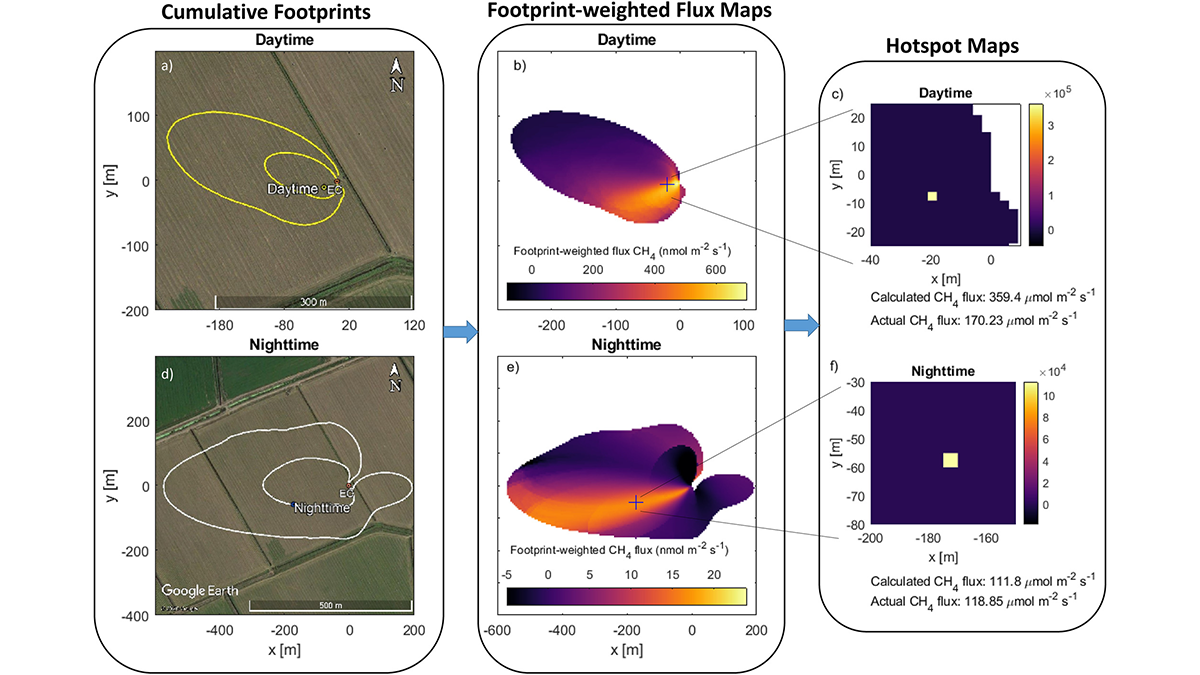Editors’ Highlights are summaries of recent papers by AGU’s journal editors.
Source: Journal of Geophysical Research: Biogeosciences
Greenhouse gas emissions from ecosystems or fossil fuel activities vary in space and time. Some of these, like methane, can be focused into small regions, known as “hotspots”. Detecting these hotspots is essential for understanding ecosystem biogeochemistry processes and for identifying approaches and locations to reduce emissions that contribute to global warming, a core goal of recent climate policies.
Rey-Shanchez et al. [2022] demonstrate a new approach by using eddy covariance flux towers. While these towers traditionally measure whole ecosystem fluxes over kilometer scales, the observation that what exactly the tower measures – it’s so-called “footprint” – varies in space and time, can be taken advantage to identify hotspots. Using an artificial tracer along with an evaluation of multiple footprint models on a field with known differences in methane emitting land covers, the authors successfully demonstrate their statistical approach reliably detects hot-spots and spatial variations in methane emissions across a wetland and agricultural field complex.
Citation: Rey-Sanchez, C., Arias-Ortiz, A., Kasak, K., Chu, H., Szutu, D., Verfaillie, J., & Baldocchi, D. (2022). Detecting hot spots of methane flux using footprint-weighted flux maps. Journal of Geophysical Research: Biogeosciences, 127, e2022JG006977. https://doi.org/10.1029/2022JG006977
—Ankur R. Desai, Editor, Journal of Geophysical Research: Biogeosciences

